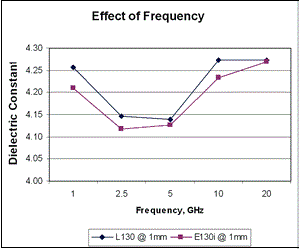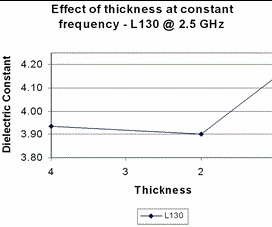Zinc Phosphate Coatings on Non-Ferrous Substrates-- Part II
The second part of a three-part series that characterizes various zinc phosphate coatings on zinc-plated or galvanized substrates...
PART II (continued from Part I--September, 1996)
This is the second part of a three-part series of articles on zinc phosphate coatings. It characterizes various zinc phosphate coatings on zinc-plated or galvanized substrates.
Dip and spray processes with and without grain refinement were used to coat the substrates. Calcium-modified (dip only), manganese-modified (dip and spray) and nickel-fluoride (spray only) formulations were used.
Standard four by six ft or four by 12-inch panels coated with electro-deposited zinc or galvanized (G60 or G90) coatings were used in this study. Various phosphate coating chemical suppliers applied the coatings using the formulations described above. The phosphated panels were examined using a scanning electron microscope (SEM) at 500X. Photos were taken to illustrate crystal structure and coating coverage. Testing was also performed to determine the phosphate coating weight. X-ray analyses on the SEM were also performed.
Part one of this series showed calcium-modified coatings on zinc plating with much higher coating weights (1). The proprietary solution used in that study was different and produced coating weights in the 700-1,000 mg/ft range without grain refinement and 600-800 mg/ft with grain refinement. The coatings in the previous report were applied at 180 to 200F, while the coatings in this study were applied at 145 to 155F. This temperature variation could be responsible for the lower coating weights observed in this study.
The first series of phosphate coatings to be evaluated were applied with immersion calcium-modified solutions. Since few spray calcium-modified solutions exist, only the immersion process was used for this test.
View First Series' Photos
The large crystal structure and high coating weights observed on the galvanized substrates indicate that the calcium-modified solutions are not effective in controlling the grain size or coating weight. The calcium containing crystals (nodules) on the galvanized substrate (figure 3) appear to have formed after the large zinc phosphate platelets were already present. Both zinc-plated and galvanized substrates yield higher coating weights than steel in the same solution. This is due to the higher reactivity of zinc surfaces in the phosphating solution.
Rapid dissolution of the zinc metal saturates the phosphating solution with zinc ions that deposit on the surface before the calcium chemicals start any type of crystal refinement. Use of the titanium grain-refinement treatment also controls the crystal structure more predominately than the calcium chemicals in the phosphating solution. A previous paper showed that abrasive blasting on steel provided sufficient surface activity to prevent the formation of calcium-modified zinc phosphate nodules(2).
The calcium chemicals in the zinc phosphate solution appeared ineffective for controlling coating weight or crystal structure on zinc substrates. Titanium grain-refinement appeared ineffective on the galvanized surface using calcium-modified solutions. The federal specification for lightweight phosphate coatings (TT-C-490) requires coating weights to be in the 150-500 mg/ft range. Coating weights for the calcium-modified formulations ranged from 359 to 1,350 mg/ft with large variations in crystal structure. Immersion calcium-modified solutions are not suitable for depositing satisfactory zinc phosphate coatings on zinc-plated or galvanized surfaces.
The second series of coatings evaluated were applied with immersion or spray manganese-modified zinc phosphate solutions. Crystal size, with and without grain refinement, was consistent for both the spray and immersion processes along with complete coverage of the substrate. The grain refinement dip consistently provided finer crystalline structures and lower coating weights.
View Second Series' Photos
The manganese-modified zinc phosphate coatings(3). showed consistent coating weights and crystal structures for spray and immersion coatings on zinc-plated and galvanized surfaces. The effect of grain refinement prior to phosphating significantly reduced the coating weight and grain size for both spray and immersion deposits. The manganese shows up in the x-ray analysis of the manganese-modified zinc phosphate coatings similar to calcium in the x-ray analysis of the calcium-modified zinc phosphate nodules. When a grain-refinement dip was used, the manganese still showed up in the x-ray analysis of the phosphate coating, unlike the calcium-modified coatings where the calcium disappeared from the x-ray analysis of the coating. This implies that the manganese in a manganese-modified solution is more effectively incorporated into the crystal structure than calcium is in a calcium-modified solution.
The immersion phosphating lasted two min, and the spray phosphating was one min. Yet the coating weights were higher for the spray applied coatings. This is different from phosphate coatings on steel where immersion coatings normally have a higher coating weight than spray coatings. It should also be noted that most manganese-modified zinc phosphate solutions also contain some fluoride and nickel or cobalt ions. However, the fluoride and nickel do not show up in the x-ray analysis of these coatings. No solutions using cobalt were used so the presence of cobalt in the surface crystals is undetermined. The manganese-modified zinc phosphate solutions provided acceptable coatings on zinc-plated and galvanized surfaces.
The nickel-fluoride zinc phosphate sprayed on zinc plating and galvanized surfaces showed up as large, flat platelets on both surfaces. Incomplete coverage was noted on the galvanized substrate processed without a grain-refinement dip. Using the grain-refinement dip prior to phosphating significantly reduced the size of the crystals on both surfaces and improved the coverage on the galvanized surface. Use of a grain-refinement dip also significantly reduced the coating weight. According to Rausch (4), the fluoride assists in keeping the galvanize active (minimizes passivation) so that areas that contain impurities (aluminum and lead) can be uniformly phosphate coated along with the zinc. Mr. Rausch also states that fine-grained galvanize is more amenable to phosphating than those with coarser crystalline structures. In the latter case, some crystal facets are uniformly phosphated while others behave as if they were completely passivated. Galvanizing treatments of chromate and silicate may also induce passivation. The previous paper described a phosphate coating on cyanide zinc plating where passivation had occurred with resulting poor coverage. In that case a nickel-chlorate zinc phosphate solution was used in an attempt to form a coating. A grain-refinement dip had to be used to get coverage with the Ni-chlorate solution.
The Third series of coatings evaluated were applied by spraying with nickel-flouride zinc phosphate solutions. Coverage varied with substrate material and grain refinement resulted in lower coating weights. A summary of all the coating weights and approximate coverage is included in Tables I and II:
View Third Series' Photos
| TABLE I -- Coating Weight and Coverage on Zinc Plated Substrates |
|||||
| IMMERSION | SPRAY | ||||
| PHOSPHATE | w/o G.R. | w/ G.R. | w/o G.R. | w/ G.R. | |
| Calcium Modified | 359 (100 pct) | 489 (100 pct) | --- | --- | |
| Mn Modified | 541 (100 pct) | 274 (100 pct) | 633 (100 pct) | 236 (100 pct) | |
| Nickel-Flouride | --- | --- | 737 (100 pct) | 429 (100 pct) | |
TABLE II -- Coating Weight and Coverage on Galvenized Substrates
| IMMERSION | SPRAY | ||||
| PHOSPHATE | w/o G.R. | w/ G.R. | w/o G.R. | w/ G.R. | |
| Calcium Modified | 350 (100 pct) | 1316 (100 pct) | --- | --- | |
| Mn Modified | 537 (100 pct) | 212 (100 pct) | 714 (100 pct) | 243 (100 pct) | |
| Nickel-Flouride | --- | --- | 708 (100 pct) | 353 (100 pct) | |
Thus, it appears that the fluoride provides the function in the formulation to minimize passivation. Freeman states that for galvanize surfaces, fluoride is used to activate the surface and complex any dissolved aluminum from the surface that could poison the phosphating solution (5). The nickel-fluoride zinc phosphate applied by spraying provided acceptable coatings when a titanium grain refiner was incorporated into the procedure.
Various types of zinc phosphating solutions can produce a variety of grain sizes, crystal structures, coating weights and coverage on zinc-plated and galvanized surfaces. Of the nine specifications listed in a previous article for light phosphate coatings (6), only the German specification identified the four different formulations that are the basis for the current state-of-the-art in phosphate coating technology. The ISO specification, which has subsequently been published and is a take-off on the German phosphating specification, also lists the four different formulation types. Since the light phosphate coating is normally a pretreatment for subsequent coatings, the engineer and the applicator must know the type of crystal structure and solution chemistries necessary to ensure the function of those coatings. Often the engineer is only familiar with the specification and not the optimum phosphate solution/coating for a specific application. The applicator, on the other hand, knows what the process is capable of but is not knowledgeable as to the engineering function. The result is often the proverbially right hand not knowing what the left hand is doing, which results in a lot of bad feelings and poor product. The applicator and the engineer need to communicate so that the final product is something that both can be proud of and meets the functional requirements of the customer.
References
- Menke, J., Zinc Phosphate Coatings on Non-Ferrous Metals, Products Finishing, September 1996, pg. 106-109.
- Menke, J., Process Control for Phosphate coating, Products Finishing, Jan. 1994 pg. 56-60.
- Kent, G., Polycrystalline Conversion Coatings, Products Finishing, Sept. 1988, pg. 56-62.
- Rausch, W., The Phosphating Metals, Finishing Publications Ltd., Middlesex, England, 1990, pg. 202, 204.
- Freeman, D.B.,Phosphating and Metal Pre-treatment, Industrial Press Inc., New York, NY 1986, pg. 120.
- Menke, J., Phosphate Coating Specifications - A Comparison, Metal Finishing, Oct. 1991
Read Next
Episode 45: An Interview with Chandler Mancuso, MacDermid Envio Solutions
Chandler Mancuso, technical director with MacDermid Envio discusses updating your wastewater treatment system and implementing materials recycling solutions to increase efficiencies, control costs and reduce environmental impact.
Read MoreDelivering Increased Benefits to Greenhouse Films
Baystar's Borstar technology is helping customers deliver better, more reliable production methods to greenhouse agriculture.
Read MoreA ‘Clean’ Agenda Offers Unique Presentations in Chicago
The 2024 Parts Cleaning Conference, co-located with the International Manufacturing Technology Show, includes presentations by several speakers who are new to the conference and topics that have not been covered in past editions of this event.
Read More
























.jpg;maxWidth=300;quality=90)









